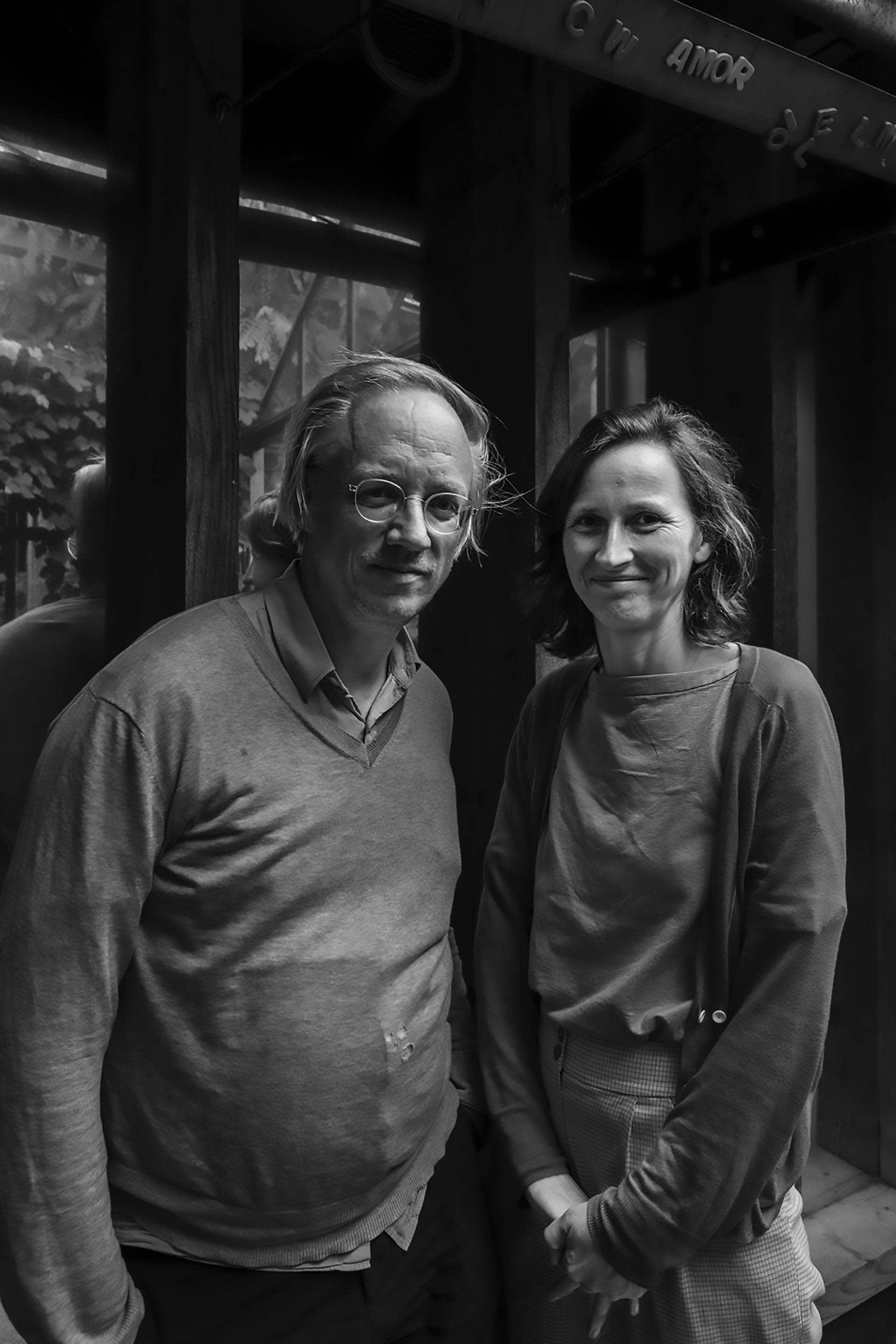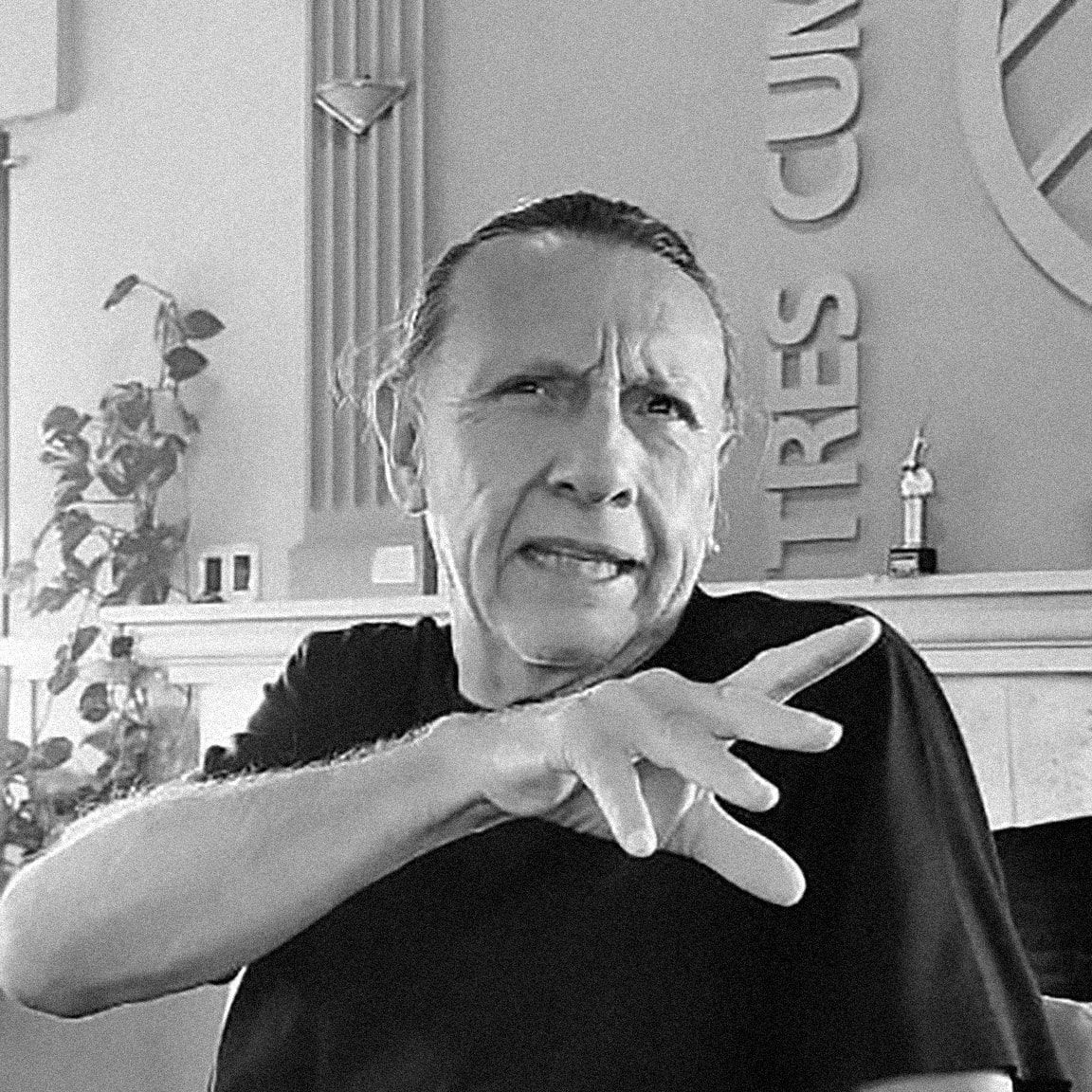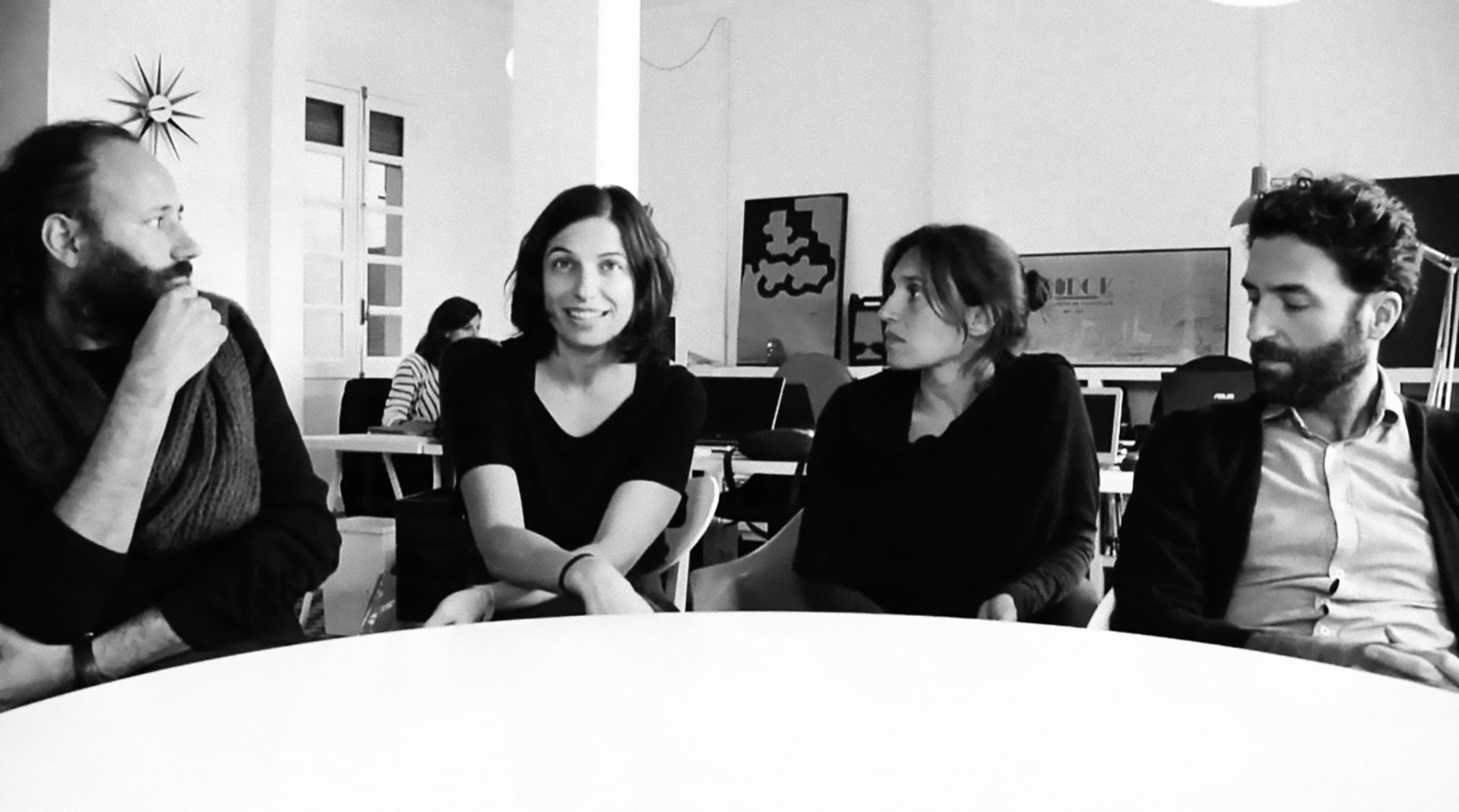Programa de Arquitetura
Programa de Arquitetura
CURATED BY Carlos Quintáns Eiras
ASSISTANT CURATOR Zaida García Requejo
CHAPEL
Bet Capdeferro & Ramón Bosch
Carmen Moreno Álvarez
Juan Domingo Santos
The composite map, in the manner of an altarpiece, is a symbolic representation of the path opened in the "Quarry Garden," in which both individual and collective experiences regarding this heritage and the fascination that this landscape, with its spontaneous gardens emerging from the rock, awakens in us, can fit. The new path between the vegetation explores the role of memory and perception of place, opening a field for reflection on vegetation's botanical and landscape importance.
In the drawings, the quarry, the buildings, and the vegetation do not appear autonomously because they are part of a dynamic vision of the elements that compose the monastery and its landscape, interconnected through topographic lines, stone walls, and paths that evoke its past and present. Scientific and intuitive elements are combined through a representation where plants, flowers, stones, words, and phrases coexist with the place's toponymy and the monastery's architecture. The map does not aim for philological reconstruction but instead evokes the history and what we imagine of this place. It lies in the significance that modern culture can give to the heritage of history and how to present and interpret its legacy from the landscape.
You already know how much you can do with your steps.
THE ROOM IN THE GARDEN
Bet Capdeferro & Ramón Bosch
Carmen Moreno Álvarez
Juan Domingo Santos
The intervention shows an ambiguous space - simultaneously exterior and interior -to illustrate the concept of intermediate space and nature's role in architecture's transformation processes.
The room in the garden is a "strange" resting space with uncertain boundaries, ready to be invaded by nature. The vegetation that enters uncontrollably through the windows, the oak planted in one of the corners, the plants that emerge from the cracks in the ground, or the shadows and rain favour new relationships and forms of life between the architecture and the garden.
With the collaboration of British garden designer and writer Noel Kingsbury, seventy species of plants that constitute the main vegetation of the convent garden have been identified. A botanical glossary has been compiled, with photographs and drawings extending along the room's walls like Noah's ark.
QUARRY GARDEN
Carmen Moreno Álvarez
Juan Domingo Santos
Ramón Bosch
On the occasion of the Contemporary Art Biennial, a group of architects and architecture students from different schools in Portugal and Spain created a path through the wild flora of the Santa Clara Monastery. The path recognises the landscape and botanical values of this place, which is located on an old quarry hidden by vegetation.
With our steps through this privileged green ecosystem, we wanted to experience its plants' biodiversity, colour, and aroma and the continuity among the elements that compose its landscape.
We made of this gesture a poetics of the place, a raison d'être of this landscape by relating the quarry stone with the architecture of the monastery with which it was built and the garden that emerges from the bowels of this geological formation, turning the walking experience into a work that aspires to reconcile time, matter, and garden. The vegetation growing on the rock is a living and active material that evolves with the seasons and connects the geological time of the quarry with the time of the architecture and landscape of the city of Coimbra in an inseparable way.
In this action, there is no political position but rather an aesthetic attitude divorced from ideology, which, with its gesture, becomes a form of resistance to the transformation of this place.
ESSENCIAL PROCESSES
Focused for centuries on building what is necessary and even unnecessary, we have forgotten that architecture is more than just a design process to define a habitable volume; it is also a need to understand what we have inherited and become aware of its value and possibilities. It is time to address necessary issues to save what we have and sometimes overlook. It is essential to talk about occupation and appropriation, the chance of establishing new ones, not acting or building minimally, consolidating only, emptying, discussing continuous use rather than sporadic, and intensely analysing what we have inherited. For this, ten projects have been selected that address these topics:
- Arturo Franco, Slaughterhouse, warehouses 8-9
- Carmen Moreno, The intermediate house
- Jan de Vylder & Inge Vinck, Caritas
- Juan Domingo Santos, Azucarera San Isidro
- Luis Longhi, Lima Municipal Theatre
- Marusa Zorec, Grad Castel
- Mauricio Rocha, San Pedro
- n'UNDO, Jai Alai Fronton
- Ramón Bosch & Bet Capdeferro, Collage House
- Ricardo Flores & Eva Prats, La Favorita
QUARRIES FROM HERE AND THERE
Quarry Extractions from Santa Clara
"Slate" Photographs by Juan Rodríguez
Boxes of slate quarry extractions from Barco de Valdeorras. Spain
Accustomed to analysing what we build and inhabit, we often forget that we use something that already exists, a material that we extract and that has taken a long time in its formation process, other materials that we "cultivate" with short growth processes and that we usually cut, and finally, different solutions that we manufacture. All of this that we use is not found, except for exceptions, in the place where we build, so we transport it from its origin to be appropriately disposed of where it belongs. Santa Clara is one of those "special" places where the material they could use is found just a few meters from where it has been used to build. Aware of the singularity of the existence of a quarry in the space of Santa Clara, a quarry that has been used to construct the building/s. A quarry is now divided by the current property's boundaries. It is not expected to find a building built with what exists just a few meters away. Therefore, it is an excellent opportunity to reflect on the necessary building processes and be aware that a nearby or distant excavation is usually required to carry out construction. Materiality shows its presence, and here, we wanted to clarify that an absence is also needed.
Until a building is constructed, what forms it is nothing more than an accumulation of various materials. The same components will eventually resurface with its demolition years later when it becomes a naked mountain of shapeless matter.
Architects have taught us to be interested in how we unite the different materials to achieve what we project. We have begun to give importance to the paths they have to take and consider what happens at the origin, where they have been extracted or elaborated. Those places bear the traces of excavation, logging, or energy consumption necessary for the processes.
Santa Clara is built with stone from its quarries, from the space under its walls, and from the quarries that we can still see inside its enclosure and that in Processes, we show again since they were hidden. While it was being built, the topography was changed in a game of this, transfer, and sum—a game of extraction and construction. Construction is not usually resolved with this ease, and we need to carry out these processes at a greater distance. We cannot see the processes that we need in such short distances.
We have transported some samples from the quarry to its contact with the building and accompanied them with other samples from distant quarries, from quarries where the passage of time, the weather, and other circumstances are changing them and showing a richness in that "negative" that has resulted from the extraction process.
UN ENCUENTRO
Juan Domingo Santos
SANTA CLARA
Arturo Franco Diaz
WORKSHOP PROCESSES
TUTORS
Ramón Bosch
Juan Domingo Santos
Carmen Moreno Álvarez
SCIENTIFIC ADVISOR
Noel Kingsbury
STUDENTS
Claudia Barral Sánchez
Víctor Hugo Batista de Azeredo
Gonçalo José Camarneiro Queiros
Cecilia Carbajo Ameijeiras
María Paula Correia de Freitas
Francisco M. D. Freire Gonçalves
Marta Sofia da Costa Ferreira Pinto
Ana Margarida Dias Ferreira
Leonor Domingo Moreno
Gabriel Fernández Caba
Juan Carlos Hódar Egea
Nuria Martín Vargas
Margarida Matias Monteiro
Miguel Mosquera García
Jerónimo Olvera Santiago
Olalla Picallos Alló
Iuliia Polulikh
Gabriel Rodrigues Cruz Pousada
Bárbara Isabel Silva Figueira
Francisco Maria Sousa Monteiro
Manuel Urbano Figueiredo
FILM AND EDITING
Sérgio Gomes
Artists
Events

Inauguration of the Architecture Program: Processes
11 MAY, 14:30–00:00

Dériville Cidade-deriva. Os situacionistas e a questão urbana, de Bruce Bégout
20 APR, 17:00

Climat et Ambiance. Réflexions sur l'influence de ce qui nous environne
19 APR, 15:00









